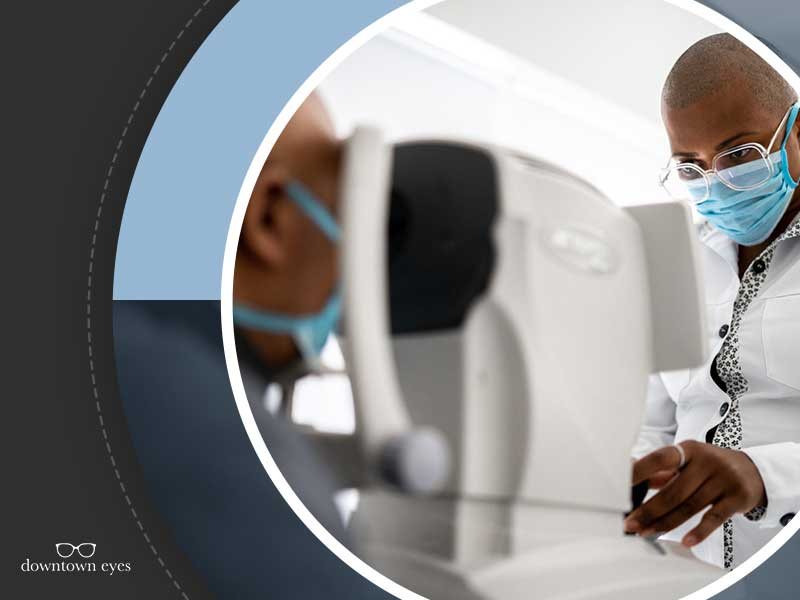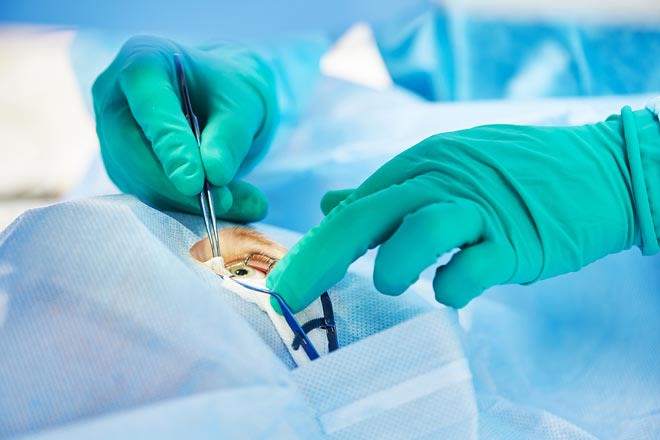Your Citizen Eye Doctor Optometrist: Dedicated to Clear Vision in Riverside
Wiki Article
The Comprehensive Eye Exam: What to Anticipate Throughout Your Visit to the Eye Physician
A browse through to the eye doctor for a comprehensive eye test is greater than a routine exam; it is an important step in safeguarding your aesthetic health. From the first discussion of your medical history to the precision of the aesthetic skill examination, each part of the exam serves a certain objective. What specifically takes place during the eye wellness analysis, and exactly how does it affect the prescription procedure? Understanding these elements is important for those that wish to keep ideal eyesight. As we discover each part, the significance of follow-up recommendations will likewise end up being clear.First Consultation
The initial consultation during an eye exam offers as an essential foundation for comprehending a client's aesthetic health needs. This stage establishes the tone for the entire assessment process, enabling the eye doctor to collect necessary information concerning the person's case history, way of living, and specific vision concerns. By carefully reviewing any type of pre-existing problems, medications, or previous surgical treatments, the eye care expert can customize the examination to resolve private requirements properly.
In addition, the first assessment is a possibility for clients to articulate any concerns or questions, fostering a collaborative partnership with their health care provider. This interaction not just guarantees that the patient really feels informed and comfortable but also empowers them to participate actively in their eye health and wellness monitoring. Collectively, these discussions make it possible for the eye doctor to design a customized assessment plan, making certain ideal treatment and exact medical diagnosis.
Aesthetic Skill Examination
Beginning the core components of an eye assessment, the aesthetic skill examination is designed to evaluate the intensity and clearness of a patient's vision. This crucial examination helps figure out how well a person can determine letters or symbols at a standard distance, normally making use of a Snellen graph (Eye Doctor). The graph consists of rows of letters that reduce in size inside out, with the person positioned at a customary range of 20 feet
Throughout the test, the client is asked to cover one eye and read aloud the tiniest line of letters they can see plainly. This procedure is duplicated for the other eye. The outcomes are taped as a fraction, with 20/20 vision showing normal visual acuity-- where the patient can see at 20 feet what a person with regular vision can see at that range.
The aesthetic acuity examination likewise determines possible refractive errors such as hyperopia, myopia, or astigmatism, which may demand rehabilitative lenses. By establishing a baseline of aesthetic performance, the test is an indispensable diagnostic tool that assists the eye treatment specialist in creating an appropriate treatment plan customized to the person's special visual demands.
Eye Wellness Analysis
Adhering to the aesthetic skill examination, an extensive eye wellness evaluation is performed to make certain the total well-being of the eyes. This essential section of the eye examination involves a thorough analysis of both the interior and exterior structures of the eye. The eye doctor or optometrist starts by taking a look at the eyelids, cornea, conjunctiva, and sclera for any kind of signs of infection, inflammation, or abnormalities. Making use of specialized devices like a slit light, the expert gains an amplified sight of the eye's anatomy, making it possible for in-depth inspection.Next, interest shifts to the internal frameworks. With the usage of ophthalmoscopy or fundus digital photography, the retina, optic nerve, and capillary are meticulously assessed. This step is vital for identifying problems such as retinal detachment, glaucoma, or diabetic retinopathy. In several instances, student dilation is performed to enhance visibility of the internal eye structures, although this may cause momentary light sensitivity for the patient.
In addition, intraocular stress is measured to evaluate for glaucoma risk. This is usually done making use of tonometry, which can discover elevated pressure levels that might recommend prospective damage to the optic nerve. Collectively, these assessments form a thorough evaluation to preserve eye health and wellness.
Refraction and Prescription
Refraction is a sophisticated procedure conducted by eye treatment professionals to identify the precise lens power required to fix refractive mistakes such as myopia, hyperopia, astigmatism, and presbyopia. The objective of this procedure is to examine just how light bends as it passes via the eye, permitting the practitioner to establish whether rehabilitative lenses are necessary for improved aesthetic acuity.During the refraction procedure, the client is asked to browse a phoropter, a gadget that contains different lenses. The practitioner will methodically change these lenses and ask the person to compare clarity between choices up until the most effective feasible vision is achieved. This procedure is important in crafting an accurate prescription that defines the appropriate lens power for eyeglasses or call lenses.
The prescription derived from this treatment not only enhances vision yet additionally acts as a foundation for choosing suitable restorative eyewear. It is necessary to ensure that prescriptions are frequently upgraded, as modifications in vision can occur with time, highlighting this website the importance of regular eye exams. This careful focus to detail assists preserve clear, comfortable vision in day-to-day live.
Follow-Up Referrals

Throughout a follow-up browse through, the eye doctor will certainly carry out a collection of tests to review visual acuity and check for any modifications in vision that might require an upgrade to the prescription. Furthermore, the follow-up gives a chance to review any type of pain or problems experienced with present eyewear. Adjustments can be made to make sure convenience and efficiency, whether with lens alteration or frame adjustments.
For patients with ongoing problems such as glaucoma, diabetes-related eye concerns, or macular degeneration, even more constant follow-ups might be necessary. These consultations are crucial for handling and possibly slowing down the progression of eye condition. Abiding by these recommendations can substantially contribute to maintaining visual health and wellness and protecting against lasting difficulties.
Final Thought
The detailed eye exam is an important process for keeping visual health and wellness, incorporating a thorough analysis of case internet history and vision concerns. Secret components consist of the visual skill test, which examines sight clearness, and the eye health and wellness assessment, which takes a look at the overall condition of the eyes. Refraction examinations assist identify the specific lens prescription essential for ideal vision improvement. Follow-up suggestions give guidance for ongoing eye care, making sure that any possible concerns are resolved promptly and efficiently.A check out to the eye doctor for an extensive eye test is more than a routine check-up; it is a critical action in protecting your aesthetic health and wellness.Kicking off the core elements of an eye exam, the aesthetic acuity examination is designed to examine the intensity and quality of a person's vision.Complying with the visual skill test, an extensive eye health and wellness analysis is conducted to make certain the general health of the eyes. These check outs enable the eye care professional to keep an eye on changes in vision, update prescriptions, and assess the general health and wellness of the eyes. Secret elements include the visual skill test, which examines sight clearness, and the eye health and wellness evaluation, which checks out the overall condition of the eyes.
Report this wiki page